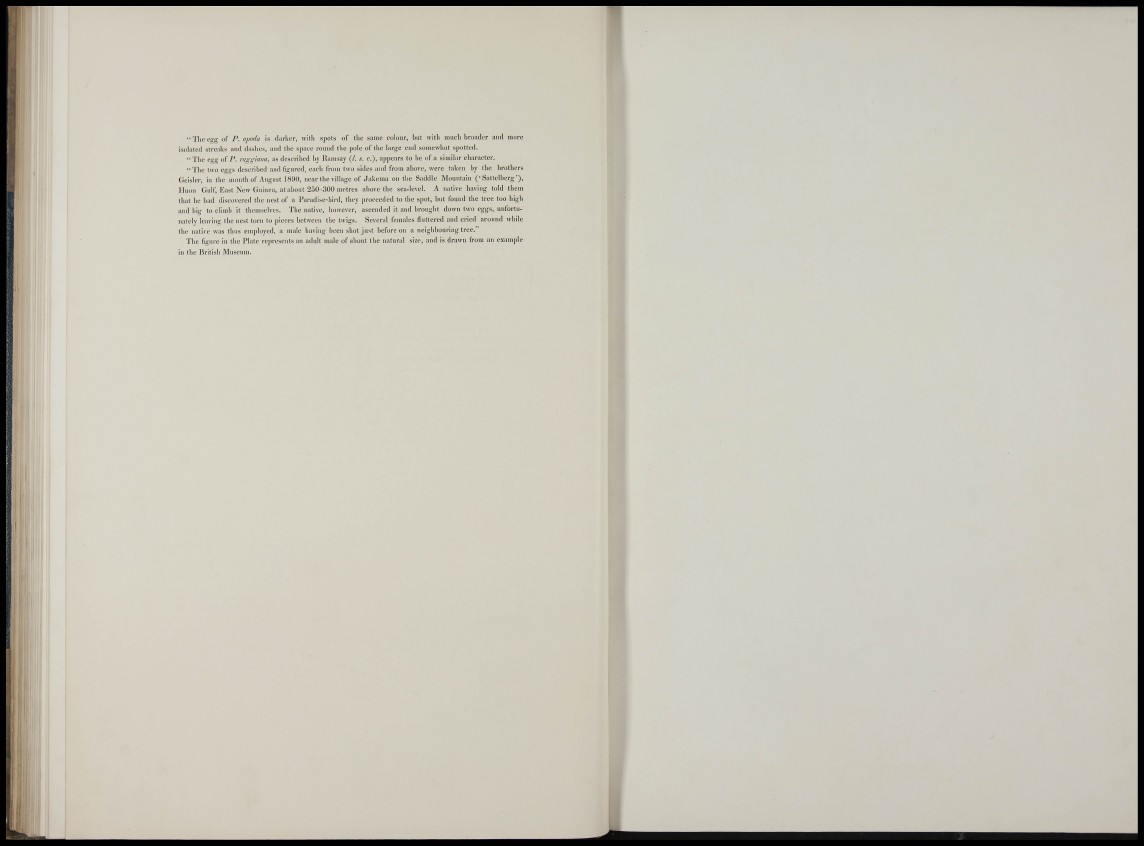
"The egg of P. apodu is iliirker, with spots of the same colour, but with much hroiiiler and more
isolated streaks and dashes, and the space round the pole of the large end somewhat spotted.
"'J'he egg of P. raggkmu, as descrihed hy Ramsay (/. s. c.), ai)j)ears to he of a simihn- character.
"The two eggs descrihed a)id figin-ed, each from two sides and from ahove, were taken hy the lirothers
Geisler, in the month of August 18!)(), near the village of Jakenia on the Saddle Mountain ('Sattelherg'),
Ilnon Gidf, East New Guinea, at about 250-;i00 metres ahove the sca-level. A native having told them
that he had discovered the jiest of a Paradise-bird, they proceeded to the spot, hut found the tree too high
and hig to climb it themselves. The native, however, ascended it and brought down two eggs, unfortunately
leaving the nest torn to pieces between the twigs. Several females fluttered and cricd around while
the native was thus employed, a male having been shot just before on a neighbouring tree."
The figure in the Plate re])resents an adult male of about the natural size, and is drawn from an example
in the British Museum.
l i I it
m